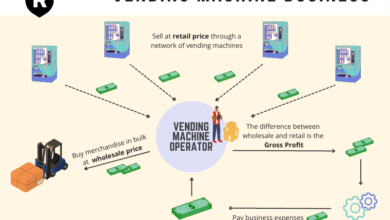E-commerce Store

- Introduction to E-commerce
- What is E-commerce?
- The Rise of E-commerce in the Digital Age
- Why Start an E-commerce Store?
- The Growing Popularity of Online Shopping
- Potential Revenue and Global Reach
- Lower Operating Costs Compared to Physical Stores
- Key Elements of a Successful E-commerce Store
- Product Selection and Niche Market
- User-Friendly Website Design
- Secure and Flexible Payment Options
- Choosing the Right E-commerce Platform
- Hosted vs. Self-hosted Platforms
- Popular Platforms: Shopify, WooCommerce, Magento, etc.
- Key Features to Look For in an E-commerce Platform
- Optimizing Your E-commerce Store for SEO
- Importance of SEO in E-commerce
- Product Page Optimization
- Content Creation and Blogging
- User Experience (UX) and Its Importance
- Designing a Mobile-Responsive Store
- Fast Loading Times and Site Performance
- Simple and Effective Navigation
- Payment Gateways and Security
- Popular Payment Gateways (PayPal, Stripe, etc.)
- Implementing SSL Certificates
- Ensuring Customer Data Protection
- Effective Product Listings
- Crafting Compelling Product Descriptions
- High-Quality Product Images
- Incorporating Customer Reviews and Ratings
- Shipping and Fulfillment Strategies
- Offering Multiple Shipping Options
- Partnering with Reliable Courier Services
- Handling Returns and Refunds
- Marketing Your E-commerce Store
- Social Media Marketing for E-commerce
- Email Marketing Campaigns
- Paid Advertising (Google Ads, Facebook Ads)
- Utilizing Data and Analytics
- Tracking Customer Behavior with Analytics Tools
- A/B Testing for Better Conversion Rates
- Utilizing Heatmaps to Improve User Engagement
- Building Trust with Your Customers
- Displaying Customer Reviews and Testimonials
- Providing Excellent Customer Support
- Offering Clear Policies (Returns, Shipping, Privacy)
- Scaling Your E-commerce Store
- Expanding Your Product Range
- Offering Global Shipping
- Hiring a Team for Customer Service and Fulfillment
- Common Challenges Faced by E-commerce Stores
- Competition in the E-commerce Space
- Managing Inventory and Stock Levels
- Overcoming Cart Abandonment
- Conclusion
- The Future of E-commerce
- Final Thoughts on Building a Successful E-commerce Store
- FAQs
- What are the initial costs of starting an e-commerce store?
- Which is the best e-commerce platform for beginners?
- How can I market my e-commerce store effectively on a small budget?
- How do I handle international shipping for my online store?
- What is the role of customer service in e-commerce success?
E-commerce Store: How to Build and Grow a Successful Online Business
Introduction to E-commerce
What exactly is e-commerce? In simple terms, it’s the act of buying and selling goods and services online. Over the past decade, e-commerce has reshaped the way businesses operate, allowing customers to shop from the comfort of their homes. Whether you’re selling handmade crafts or high-tech gadgets, e-commerce opens up endless possibilities.
E-commerce’s rise is no coincidence—technology has made online shopping more accessible than ever before. From mobile apps to fast payment systems, every aspect of the buying experience has been optimized for convenience. And as more consumers shift online, the future of retail is undeniably digital.
Why Start an E-commerce Store?
You might be wondering, “Why should I start an e-commerce store?” The answer lies in the numbers. Online shopping continues to grow exponentially, with global e-commerce sales expected to hit over $6 trillion by 2024. The potential customer base is massive, and unlike traditional brick-and-mortar stores, your reach isn’t limited to a local area—you can sell globally from day one.
Additionally, running an e-commerce store has lower overhead costs compared to physical shops. No need to rent retail space or hire extensive staff. It’s an opportunity for entrepreneurs to start small, with the flexibility to scale up as their business grows.
Key Elements of a Successful E-commerce Store
Building a successful e-commerce store isn’t just about throwing products onto a website and waiting for sales. There are several key components to focus on:
Product Selection and Niche Market
You can’t be everything to everyone, especially when you’re just starting. Choosing a niche—a specific product category or target audience—allows you to focus your efforts and stand out from competitors.
User-Friendly Website Design
Your website is your storefront, and first impressions matter. A clean, well-organized site that’s easy to navigate will keep customers engaged. If your website is hard to use, people will leave—no matter how good your products are.
Secure and Flexible Payment Options
Your customers should feel safe when making transactions on your site. Offering multiple payment methods like credit cards, PayPal, and other digital wallets is essential for smooth customer experience.
Choosing the Right E-commerce Platform
Selecting the right platform to build your store on is crucial. You’ll generally have two options: hosted or self-hosted platforms.
Hosted vs. Self-hosted Platforms
- Hosted platforms (like Shopify) manage the technical aspects for you—perfect if you’re not tech-savvy.
- Self-hosted platforms (like WooCommerce) give you more control but require more technical know-how.
Popular Platforms
Shopify, WooCommerce, and Magento are some of the most popular options, each offering unique features. For example, Shopify is known for its simplicity, while WooCommerce is highly customizable.
Key Features to Look For
Whichever platform you choose, make sure it offers essential features like inventory management, SEO tools, and mobile responsiveness.
Optimizing Your E-commerce Store for SEO
SEO (Search Engine Optimization) is what drives organic traffic to your store. Without it, your site may get lost in the sea of competitors.
Product Page Optimization
Ensure each product page has relevant keywords, clear descriptions, and optimized images to rank higher in search engines.
Content Creation and Blogging
Blogs not only improve SEO but also allow you to engage with your audience. Write posts related to your niche to build trust and drive traffic.
User Experience (UX) and Its Importance
The experience customers have on your site can make or break your business.
Designing a Mobile-Responsive Store
Over half of all online traffic comes from mobile devices, so having a mobile-friendly site is essential.
Fast Loading Times and Site Performance
A slow website can kill sales. Optimize your images, enable caching, and use a reliable hosting service to ensure fast loading times.
Simple and Effective Navigation
Make sure customers can easily find what they’re looking for with clear categories, a search function, and intuitive filters.
Payment Gateways and Security
Ensuring secure transactions is non-negotiable in e-commerce. Customers expect their payment details to be safe, so you need to provide secure payment gateways.
Popular Payment Gateways
Some of the most trusted payment gateways include PayPal, Stripe, and Square, which offer easy integration and trusted security.
Implementing SSL Certificates
SSL certificates protect customer data and establish trust by showing a secure connection—this is vital for any online store.
Effective Product Listings
Your product listings should be more than just a name and price. They are your chance to sell your products.
Crafting Compelling Product Descriptions
Use persuasive language to describe the benefits of your products, not just their features.
High-Quality Product Images
Clear, professional photos are essential. People want to see exactly what they’re buying, so invest in good photography.
Incorporating Customer Reviews
Reviews act as social proof, reassuring potential buyers that others have had a positive experience with your products.
Shipping and Fulfillment Strategies
Your shipping strategy can make or break the customer experience.
Offering Multiple Shipping Options
Give customers options for shipping—fast shipping, standard, and maybe even free shipping on larger orders.
Handling Returns and Refunds
Make your return policy clear and straightforward to avoid confusion and build trust with your customers.
Marketing Your E-commerce Store
Getting customers to your store is the first challenge, but how do you do it?
Social Media Marketing
Platforms like Instagram, Facebook, and TikTok are gold mines for promoting products and engaging with your audience.
Email Marketing Campaigns
Build an email list and send regular updates about sales, new products, and exclusive offers.
Paid Advertising
Google Ads and Facebook Ads can help you target specific customer groups with precision.
Utilizing Data and Analytics
Tracking performance is key to improving your store.
Tracking Customer Behavior
Tools like Google Analytics help you see where visitors come from, how they interact with your site, and what needs improving.
A/B Testing for Conversion Rates
Test different website elements—like button colors or page layouts—to see what leads to more sales.
Building Trust with Your Customers
Trust is a huge factor in online shopping.
Displaying Customer Reviews
Feature customer testimonials prominently to show potential buyers that others trust you.
Providing Excellent Customer Support
Offer live chat, email, or phone support so customers can get help quickly when needed.
Scaling Your E-commerce Store
Once your store is running smoothly, it’s time to think about growth.
Expanding Your Product Range
Introduce complementary products or new lines to encourage repeat customers and attract new ones.
Offering Global Shipping
Expand your audience by offering international shipping, and tap into new markets.
Common Challenges Faced by E-commerce Stores
Running an e-commerce store isn’t without its challenges.
Managing Inventory
Balancing supply and demand is critical to avoid running out of stock or overstocking.
Cart Abandonment
Many customers add items to their cart but never complete the purchase. Sending reminder emails can help recover some of these sales.
Conclusion
Starting an e-commerce store can be incredibly rewarding, but it requires careful planning, execution, and ongoing effort. The landscape is constantly evolving, and staying on top of trends, customer needs, and technological advancements is crucial. By focusing on the customer experience, leveraging SEO and data analytics, and offering secure, seamless shopping, you can build a thriving online store that grows with you.
FAQs
- What are the initial costs of starting an e-commerce store?
- The initial costs can range from $500 to $10,000 depending on the platform, inventory, and marketing strategies.
- Which is the best e-commerce platform for beginners?
- Shopify is widely considered beginner-friendly due to its easy setup and integrated tools.
- How can I market my e-commerce store effectively on a small budget?
- Focus on organic methods like SEO, social media, and email marketing to get started without breaking the bank.
- How do I handle international shipping for my online store?
- Use shipping carriers that specialize in international deliveries and ensure all taxes and customs fees are clearly communicated to customers.
- What is the role of customer service in e-commerce success?
- Excellent customer service builds trust, encourages repeat business, and can lead to positive reviews and referrals.






